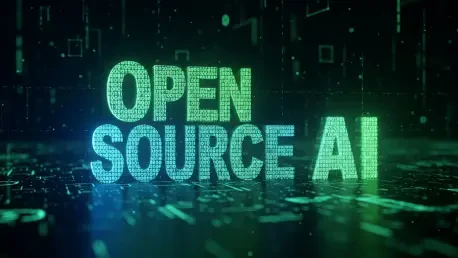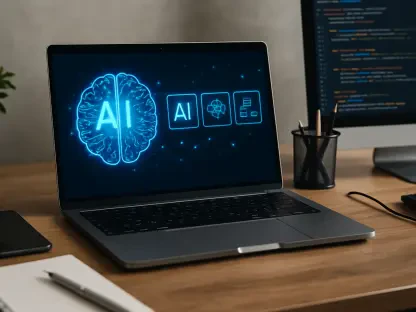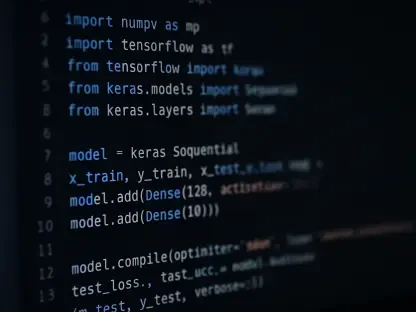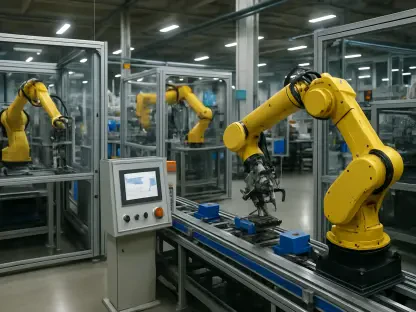The technology sector stands at a pivotal moment where access to cutting-edge tools is no longer confined to a select few with deep pockets, and a staggering 63% of organizations, according to recent industry surveys, now leverage open source AI models to fuel their operations. This marks a seismic shift in how innovation is cultivated. This widespread adoption signals a democratization of artificial intelligence, empowering developers and businesses of all sizes to experiment and create without the traditional financial constraints. This report delves into the transformative power of open source AI, exploring its role in driving developer innovation, the trends shaping its trajectory, the challenges that accompany its integration, and the future landscape it promises to shape.
The Rise of Open Source AI in the Tech Landscape
Open source AI has emerged as a cornerstone of the modern technology ecosystem, with its adoption accelerating across diverse sectors. These models, characterized by publicly accessible code and frameworks, have become indispensable for developers seeking to build sophisticated solutions without prohibitive costs. From startups to global enterprises, the ability to tap into advanced AI tools has leveled the playing field, fostering a culture of experimentation and rapid prototyping that was once unimaginable for smaller players.
Key platforms such as TensorFlow, PyTorch, and Hugging Face have become synonymous with this movement, offering robust libraries and pretrained models that cater to a wide array of applications. These tools not only provide the building blocks for AI development but also cultivate vibrant communities where knowledge and resources are shared freely. By breaking down silos, open source AI enables collaboration on a global scale, ensuring that even niche challenges can find innovative solutions through collective effort.
The significance of this trend lies in its ability to lower barriers to entry, making AI accessible to a broader audience. This democratization drives innovation across industries, from healthcare to finance, as organizations can now tailor solutions to specific needs without being tethered to expensive proprietary systems. As a result, the tech landscape is witnessing an unprecedented wave of creativity, with open source AI acting as a catalyst for transformative change.
Key Trends and Market Dynamics in Open Source AI
Emerging Trends Shaping Developer Innovation
A notable trend in the open source AI space is the growing reliance on these models for an expansive range of applications, spanning audio processing, large language models, and image recognition. Developers are increasingly turning to platforms like Mozilla TTS for text-to-speech capabilities or Stable Diffusion for advanced computer vision tasks, showcasing the versatility of these tools. This diversity in application reflects a shift toward more specialized and accessible AI solutions that cater to unique industry demands.
Collaboration within global communities is another driving force, as developers, data scientists, and researchers converge to refine and enhance these models. The push for ethical AI practices also plays a critical role, with open source frameworks providing transparency that helps address biases and accountability concerns. Additionally, the evolving needs of developers are steering the creation of more user-friendly tools, ensuring that even those with limited expertise can contribute to and benefit from AI advancements.
Looking ahead, opportunities for innovation are ripe through customization and integration with emerging technologies such as edge computing and IoT. The ability to adapt open source models to specific datasets or combine them with real-time processing capabilities opens new frontiers for developers. This trend signals a future where AI is not just a standalone tool but an integral part of interconnected technological ecosystems, amplifying its impact across sectors.
Market Insights and Growth Projections
Current data underscores the robust adoption of open source AI, with 63% of surveyed organizations integrating these models into their workflows, as highlighted by leading industry analyses. This figure reflects a broader acceptance of open source solutions as viable alternatives to proprietary systems, driven by their cost-effectiveness and adaptability. Performance metrics for frameworks like PyTorch and TensorFlow further indicate high efficiency and scalability, making them preferred choices for enterprise-level projects.
Growth projections suggest that the open source AI market will continue to expand significantly from 2025 to 2027, with increasing investments in community-driven projects and infrastructure support. Analysts anticipate a surge in the development of specialized models tailored for niche applications, further boosting adoption rates. This momentum is expected to position open source AI as a dominant force in the broader AI market, influencing everything from software development to business operations.
A forward-looking perspective reveals that open source AI will likely redefine competitive dynamics in the tech industry over the coming years. As more organizations recognize the strategic value of these models, the emphasis will shift toward building ecosystems that support seamless integration and scalability. This evolution promises to reshape market priorities, placing open source AI at the heart of technological progress and innovation.
Challenges in Adopting Open Source AI Models
The adoption of open source AI models, while promising, is not without significant hurdles that organizations must navigate. A primary challenge is the requirement for substantial technical expertise to implement and customize these models effectively. Developers often need deep knowledge of machine learning concepts to optimize performance, a barrier that can exclude smaller teams or businesses lacking dedicated AI specialists.
Beyond expertise, issues such as data quality and infrastructure demands pose critical obstacles. Many open source models require high-quality datasets for training and fine-tuning, which may not be readily available to all users. Additionally, scaling AI projects to handle large volumes of data often necessitates robust computational resources, straining budgets and requiring strategic planning to manage costs effectively.
Integration complexities further complicate adoption, as aligning open source AI with existing systems can be cumbersome and time-intensive. Security vulnerabilities within public repositories also raise concerns, as malicious code or outdated dependencies could compromise projects. Licensing constraints add another layer of difficulty, with varying terms that may restrict commercial use or require legal scrutiny. To address these challenges, organizations can leverage community support for troubleshooting, invest in training programs to build internal capabilities, and prioritize infrastructure upgrades to ensure scalability and security.
Regulatory and Ethical Considerations for Open Source AI
Navigating the regulatory landscape is a crucial aspect of adopting open source AI, particularly with stringent data privacy laws like GDPR shaping compliance requirements. Organizations must ensure that their use of public datasets and models adheres to legal standards, protecting user information and maintaining trust. This necessitates a thorough understanding of regional regulations and proactive measures to align AI practices with mandated guidelines.
Transparency remains a key advantage of open source AI in addressing ethical concerns, as publicly accessible code and model weights allow for scrutiny of potential biases or inaccuracies. This openness enables developers to identify and mitigate issues that could skew outcomes, fostering accountability in AI deployment. Such practices are vital in industries where fairness and impartiality are paramount, ensuring that technology serves as a force for equitable progress.
The impact of regulatory changes on adoption practices cannot be overlooked, as evolving policies may impose new constraints or require adjustments in how models are used. Organizations must stay agile, aligning their strategies with ethical standards to maintain compliance and public confidence. By prioritizing transparency and proactive governance, the open source AI community can navigate these considerations while continuing to drive innovation responsibly.
The Future of Open Source AI in Developer Innovation
The trajectory of open source AI points toward a landscape rich with potential, particularly as advanced large language models and specialized frameworks gain prominence. Emerging technologies are expected to push the boundaries of what these models can achieve, enabling applications that range from real-time language translation to highly personalized user experiences. This progression hints at a future where AI becomes increasingly embedded in everyday tools and processes.
Potential disruptors, such as heightened collaboration among global communities or intensified competition with proprietary models, will likely influence the direction of open source AI. Developer preferences are also evolving, with a growing demand for intuitive tools that simplify complex tasks. These shifts suggest a dynamic environment where adaptability and user-centric design will be key to maintaining relevance and impact.
Growth areas are poised to expand under the influence of global economic conditions and the continuous innovation in AI applications. Supportive community ecosystems will play a pivotal role in sustaining this momentum, offering resources and knowledge-sharing platforms that empower developers. As these elements converge, open source AI is set to redefine the boundaries of technological possibility, shaping a future where innovation knows no limits.
Harnessing the Power of Open Source AI
Reflecting on the insights gathered, it becomes evident that open source AI models have carved a significant niche in driving developer innovation through unmatched accessibility and collaborative strength. The journey through their adoption reveals a landscape where flexibility empowers creators to push boundaries, even as challenges test organizational resolve. Each trend and projection discussed paints a picture of a technology that has already begun transforming industries with its potential.
Looking back, the balance between opportunity and obstacle stands out as a defining theme, underscoring the transformative capacity of these models when harnessed effectively. For developers and organizations, the next steps involve strategic investments in skill development to bridge expertise gaps and in infrastructure to support scalable solutions. Prioritizing ethical practices also emerges as a critical action, ensuring that innovation aligns with societal values.
As the landscape continues to evolve, a focus on fostering stronger community ties offers a pathway to sustained growth. Embracing collaborative platforms could unlock new avenues for problem-solving, while staying attuned to regulatory shifts would safeguard progress. Ultimately, the commitment to leveraging open source AI with intention and foresight promises to amplify its impact, setting the stage for a future where technology serves as a universal enabler of creativity and advancement.









